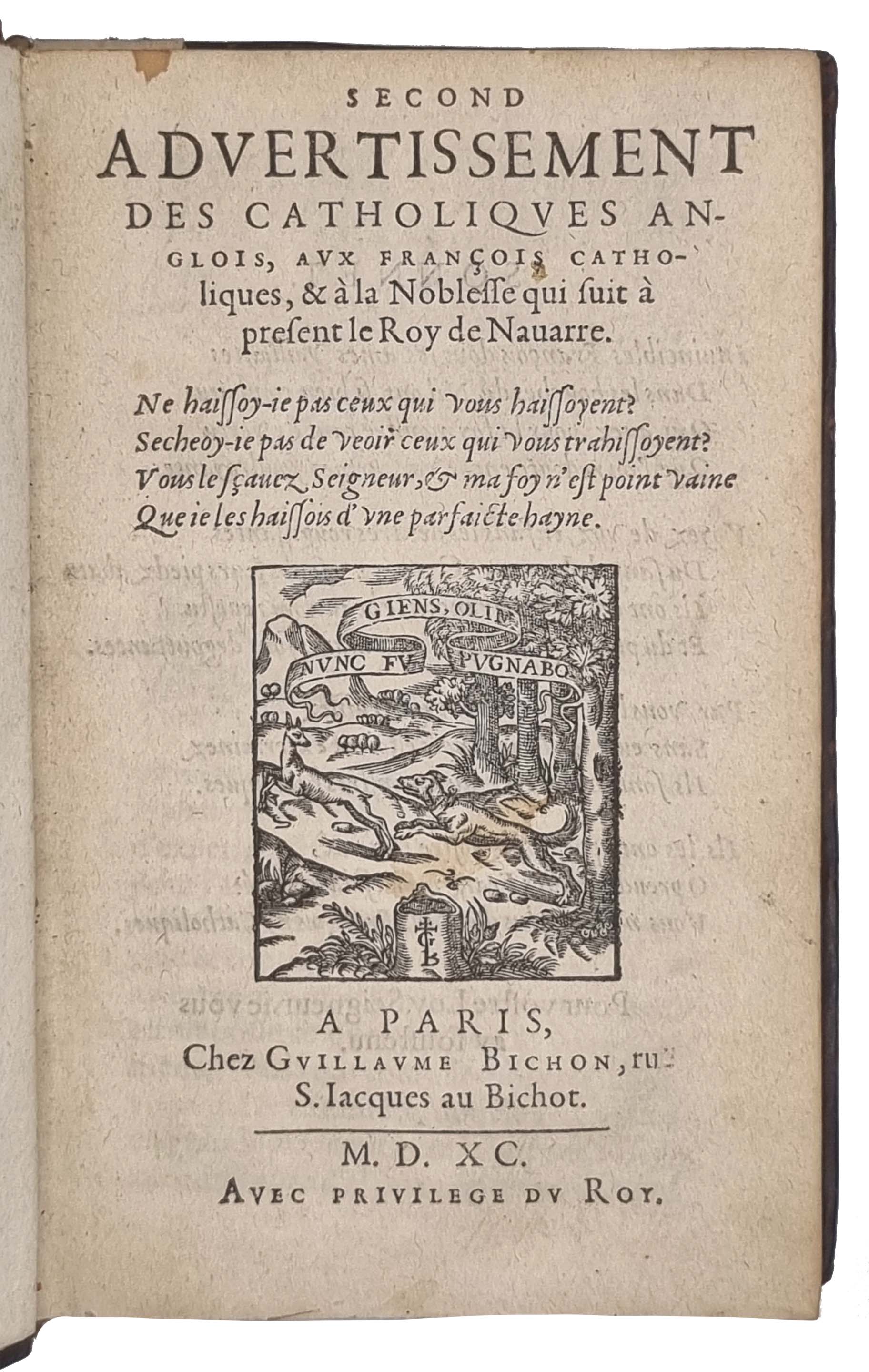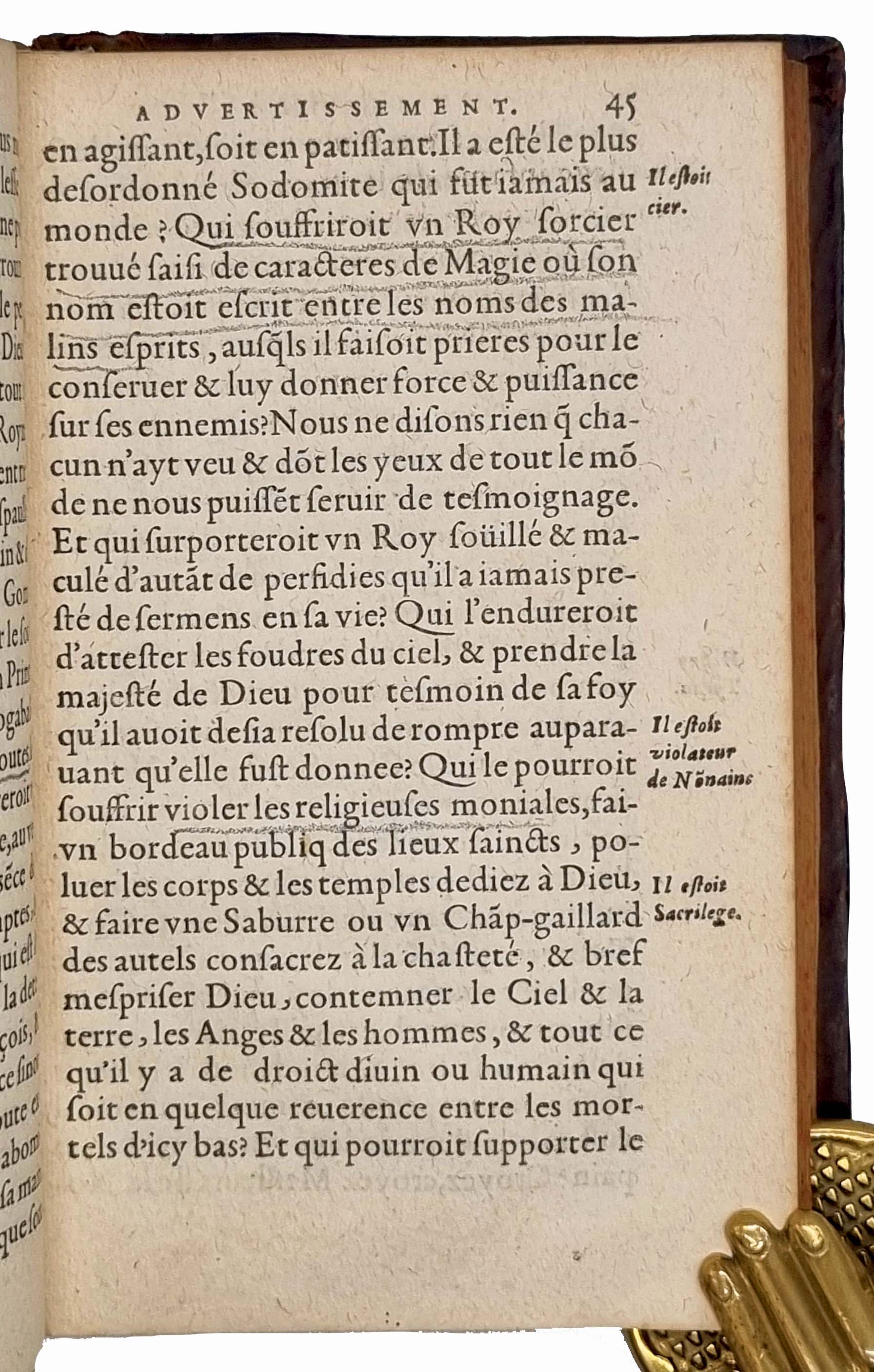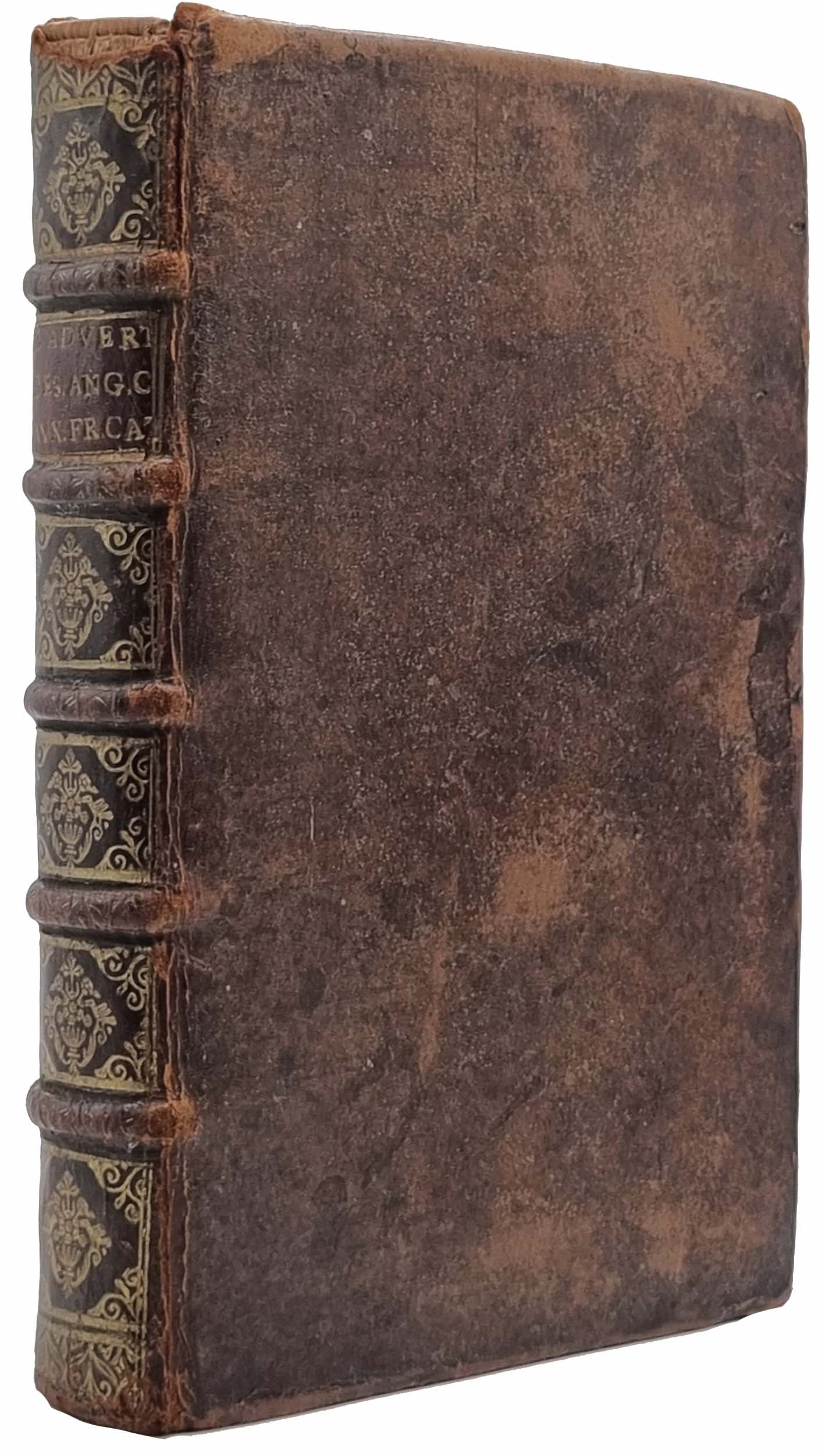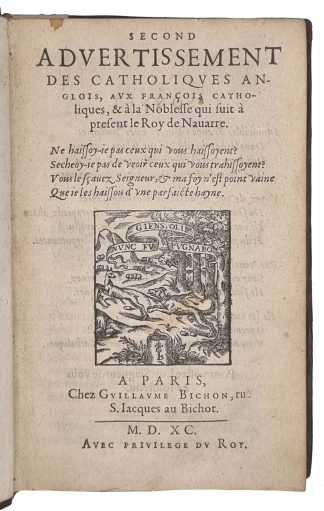D’ORLÉANS, Louis
Second advertissement, des catholiqves anglois avx François catholiques, & à la noblesse qui suit à present le roy de Nauarre
Paris, Chez Guillaume Bichon, M.D.XC£1,650.00
FIRST EDITION. 8vo. ff. 167 [i.e. 175], [iii]. A-Y . Roman letter, some Italic. Bichon’s woodcut device of a hunting scene on title, floriated woodcut initials, typographical headpieces, underlining in pencil in places. Light age yellowing, the very rare spot or splash. A very good copy in late seventeenth century French dark calf, spine with raised bands, richly gilt in compartments, red morocco label gilt, edges gilt worked with a floral scroll, a.e.r., head of spine chipped, extremities a little rubbed.
Extremely rare first edition of this strident piece of of propaganda against the person of Henri IV and French Huguenots in general, by the Parisian lawyer Louis Dorléans, a prolific writer of anti-protestant literature. “1542-1629. Son of a Parisian procureur (solicitor) Dorléans became an avocat. He studied with the humanist and the Latin poet Jean Dorat, and himself wrote poetry. A fervent Catholic he joined the revolutionary group of the Paris Holy League, the Sixteen. He was a prolific propagandist for the League, posing as a catholic Englishman warning French Catholics of the danger of a Protestant ruler. In 1589 he became avocat-general in the Leaguer parlement of Paris. Growing more conservative, he dissociated himself from the Sixteen and recommended the Leaguer estates not to accept the Tridentine decrees without Gallican safeguards. He fled from Paris to Antwerp in 1594 and published a satire vilifying Henri IV” James Henderson Burns. ‘The Cambridge History of Political Thought 1450-1700.’
The work is especially interesting as Dorléans assumes the position of an English Catholic who who had been persecuted for his faith in Elizabethan England. The work covers every possible angle in its attack on Henri IV suggesting that he is himself diabolical, certainly in league with the devil, pointing out his many crimes, his sexual depravity (including that of his wife and mistresses), arguing that it would be impossible for the French people to accept a King who had been excommunicated. The work was particularly successful, being printed in Toulouse, Lyon, Rouen, with in a second edition at Paris within a year. “On the 22nd of March 1594, the day that Henri IV regained Paris from the catholic league, action was taken to respond to English demands. According to l’Estoile, on the suit of the English ambassador, the tableau showing the cruelty of the English queen against the Catholics, installed by the league in the cathedral of Notre Dame, was removed on the express command of his Majesty. … Henri IV was willing to concede to English requests because he wanted England on side against Spain, and because it complemented his wider actions against remnants of the league. ..(It) suggests that anti-Elizabethan propaganda remained significant, even if its creators were no longer active in Paris. Shortly after the removal of the tableau, copies of D’Orléan’s Avertissement were publicly burned. A surviving copy contains a note stating that they ‘were burnt, on 2 April 1594 at Place Maubert and at the Trahoir [?] Cross; following this they were very rare.” Katy Gibbons. ‘English Catholic Exiles in Late Sixteenth-century Paris.’
This first edition is particularly rare; USTC records only two copies outside French libraries, one at the British Library and the other in the National Library, St. Petersburg.
BM STC Fr. p. 151. C16th. USTC 62791 Not in Lindsay and Neu or Milward.In stock






